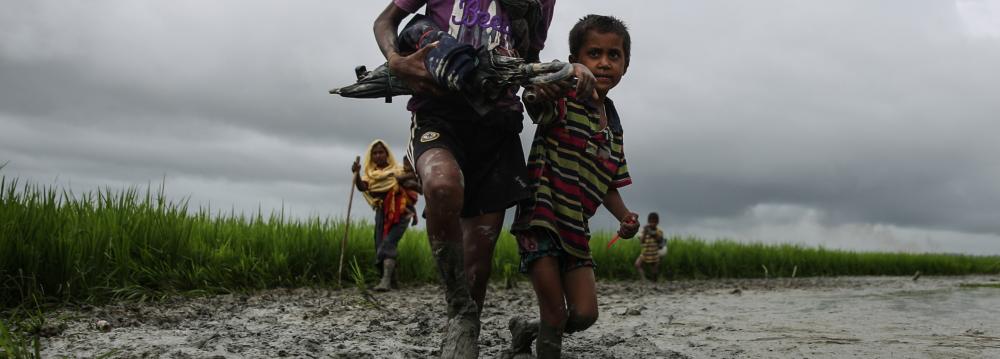There are at least five mass graves, all previously unreported, that have been confirmed by The Associated Press through multiple interviews with more than two dozen survivors in Bangladesh refugee camps and through time-stamped cellphone videos.
The Myanmar government regularly claims such massacres of the Rohingya never happened, and has acknowledged only one mass grave containing 10 “terrorists” in the village of Inn Din. However, the AP’s reporting shows a systematic slaughter of Rohingya Muslim civilians by the military, with help from Buddhist neighbors—and suggests many more graves hold many more people, CBS News reported.
Noor Kadir and 14 others, all Rohingya Muslims in the Myanmar village of Gu Dar Pyin, had been choosing players for the soccer-like game of chinlone when the gunfire began. They scattered from what sounded like hard rain on a tin roof. By the time the Myanmar military stopped shooting, only Kadir and two teammates were left alive.
Days later, Kadir found six of his friends among the bodies in two graves.
The graves are the newest piece of evidence of what looks increasingly like a genocide in Myanmar’s western Rakhine State against the Rohingya, a long-persecuted ethnic Muslim minority in the predominantly Buddhist country formerly known as Burma.
Repeated calls to Myanmar’s military communications office went unanswered on Wednesday and Thursday. Htun Naing, a local security police officer in Buthidaung township, where the village is located, said he “hasn’t heard of such mass graves.”
Myanmar has cut off access to Gu Dar Pyin, so it’s unclear just how many people died, but satellite images obtained by the AP from DigitalGlobe, along with video of homes reduced to ash, reveal a village that has been wiped out. Community leaders in the refugee camps have compiled a list of 75 dead so far, and villagers estimate the toll could be as high as 400, based on testimony from relatives and the bodies they’ve seen in the graves and strewn about the area. A large number of the survivors carry scars from bullet wounds, including a 3-year-old boy and his grandmother.
Almost every villager interviewed by the AP saw three large mass graves at Gu Dar Pyin’s northern entrance, near the main road, where witnesses say soldiers herded and killed most of the Rohingya. A handful of witnesses confirmed two other big graves near a hillside cemetery, not too far away from a school where more than 100 soldiers were stationed after the massacre. Villagers also saw other, smaller graves scattered around the village.
In the videos of the graves obtained by the AP, dating to 13 days after the killing began, blue-green puddles of acid sludge surround corpses without heads and torsos that jut into the air. Skeletal hands seem to claw at the ground.
Survivors said that the soldiers carefully planned the Aug. 27 attack, and then deliberately tried to hide what they had done. They came to the slaughter armed not only with rifles, knives, rocket launchers and grenades, but also with shovels to dig pits and acid to burn away faces and hands so that the bodies could not be identified. Two days before the attack, villagers say, soldiers were seen buying 12 large containers of acid at a nearby village’s market.
The killing began around noon, when more than 200 soldiers swept into Gu Dar Pyin from the direction of a Buddhist village to the south, firing their weapons. The Rohingya who could move fast enough ran toward the north or toward a river in the east.


